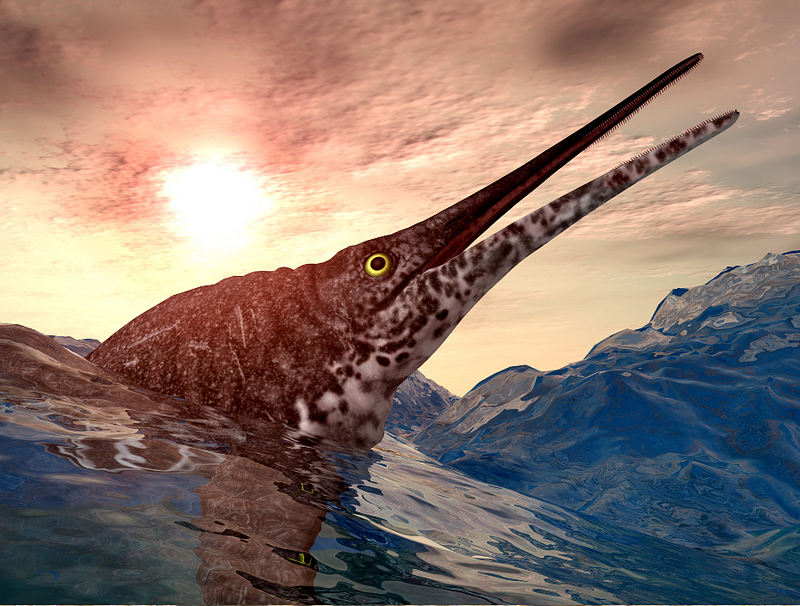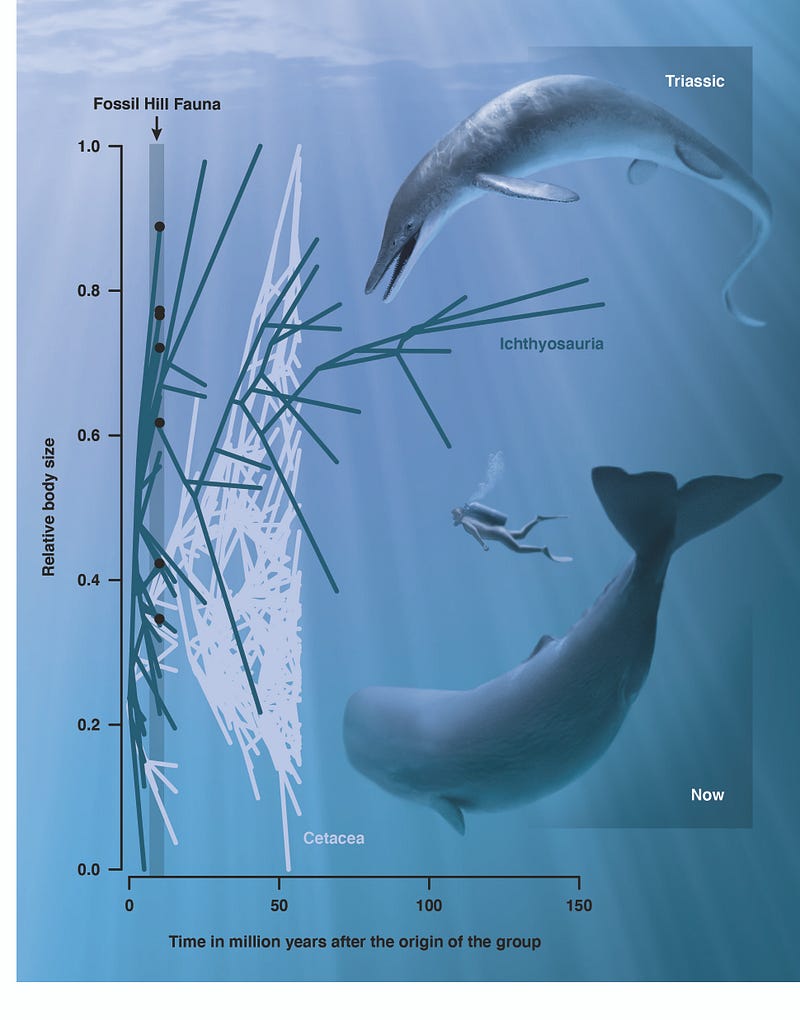Ichthyosaurs: The Marine Giants of the Mesozoic Era
Written on
Chapter 1: Understanding Ichthyosaurs
Ichthyosaurs were remarkable marine reptiles that thrived in the oceans during the Mesozoic era. With their streamlined, dolphin-like bodies and fish-like fins, they were expertly adapted for life in the water, hunting prey such as fish and ammonites. These creatures could grow to impressive lengths, with some estimates suggesting they reached up to 25 meters, making them the top predators of their time.
The focus here is on Crybospondylus youngi, an ichthyosaur from the Middle Triassic period in Nevada (USA), notable for having a skull that measures approximately 2 meters in length. This fossil represents a significant evolutionary milestone, showcasing how quickly size increased within this lineage.
When comparing ichthyosaurs to modern cetaceans (like whales and dolphins), it’s important to note that the latter’s growth to large sizes occurred over tens of millions of years, whereas ichthyosaurs achieved comparable dimensions in a much shorter timeframe. This suggests that ichthyosaurs, not cetaceans, were the pioneers of size in marine environments.
Recent research, particularly a 2023 study by Dr. Benjamin P. Kear and colleagues from Upsala University and the Natural History Museum in Oslo, suggests that ichthyopterygians may have originated during the Permian period. Early members of this group displayed adaptations for free-swimming lifestyles long before the first ichthyosaurs appeared, indicating that evolution may not have been as rapid as previously thought.

Chapter 2: The Evolution of Size
In a 2021 study, paleontologists examined body size evolution among ichthyosaurs. Their findings revealed that the ‘Fossil Hill’ site in Nevada, home to Crybospondylus youngi, contained a diverse array of large ichthyosaurs, exhibiting greater size variability than seen in cetaceans. C. youngi could grow to at least 17 meters, while other genera, like Phalarodon, were around 2 meters long.
The ecosystem at the Fossil Hill site supported ichthyosaurs by providing abundant prey, such as ammonoids, which may have contributed to their evolutionary success. Additionally, the fossil of C. youngi is dated to about 246 million years ago, indicating it lived around 3 million years after the first ichthyosaurs emerged.
Although the evolutionary paths of ichthyosaurs and cetaceans share similarities, differences primarily relate to feeding strategies. Ichthyosaurs thrived on pelagic conodonts and ammonoids after the Permian extinction, while cetaceans’ success stemmed from specialized feeding adaptations, including tooth loss in baleen whales and the development of predatory feeding in toothed whales.
A notable recent discovery indicates that Shonisaurus sveneersi, an ichthyosaur from the Late Triassic (approximately 202 million years ago), might be the largest ichthyosaur or even reptile ever documented. Based on jaw bone analyses, this species could have reached lengths of up to 25 meters. The findings suggest connections with shastasaurids, despite displaying unique morphological traits.
The video titled "ICHTHYOSAURS and relatives: Size comparison and data" provides insight into these fascinating creatures and their evolutionary significance.

The discovery of Crybospondylus youngi has reshaped our understanding of ichthyosaur evolution, illustrating the rapid changes in size and adaptation during their time. This species not only emphasizes the ecological diversity of ichthyosaurs in the Middle Triassic seas but also highlights the complex evolutionary dynamics that preceded the age of marine giants.
As paleontological research continues to unveil new findings, the story of Crybospondylus youngi serves as a reminder of the incredible diversity and complexity of life in prehistoric oceans, which were once dominated by creatures as magnificent as the giants we see today.